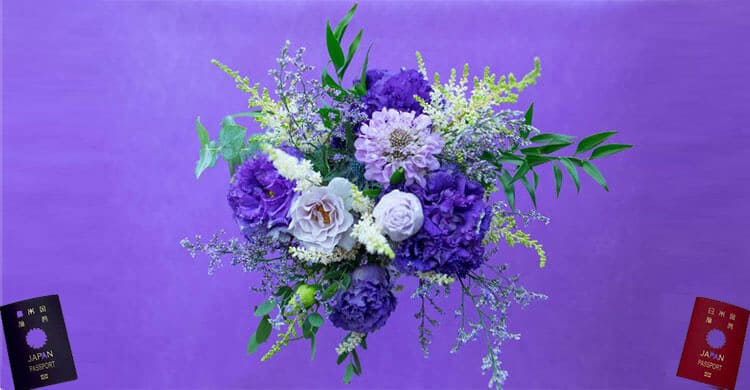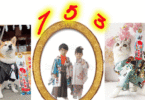Today’s theme is Chrysanthemum (Kiku), of which are said to be some of the most popular flowers in the world, next only to the Rose.
Hello everyone how are you doing? When it comes to the enjoyment of viewing the autumnal flower of “Kiku” which is said to be one of “Cool Japan”, you can’t beat it.
We agree totally to its beautiful flower, of course, however, what’s more important mention is that it is used the motif of Chrysanthemum on the cover of our passport.
Contents
What’s Chrysanthemum and its characteristics?
Chrysanthemum comes from Greek word ‘Chrys’ meaning golden (the color of the original flowers), and ‘anthemon’, meaning flower.
This name was given to it by Carolus Linnaeus, a Swedish naturalist who is also known as the father of modern taxonomy.
Its flowers bloom in various forms, and can be daisy-like, decorative, pompons or buttons. Chrysanthemum blooms come in a huge variety of shapes and sizes and in a wide range of colors.
In addition to the traditional yellow, other popular colors are white, purple, and red.
Chrysanthemums have a wealth of meaning associated with them and therefore they are very popular as florist flowers.
The flower symbolizes fidelity, optimism, joy and long life.
A red chrysanthemum conveys love
A white one symbolizes truth and loyal love
A yellow one symbolizes slighted love
“Kiku” in Japanese (chrysanthemum) is the crest of Japanese Imperial Houshold
In the early 13th century, one of the greatest admires of chrysanthemum motifs was the retired emperor Go-Toba who used them on all kinds of items.
It said that he engraved it on this sword himself. And it was because of this that a chrysanthemum design came to be used for the Imperial Family crest.
So Japanese emperors so loved the Chrysanthemum flower that they sat upon Chrysanthemum thrones.
At the same time, chrysanthemums have also long been admired for their beauty and elegance, and they became a popular motif for clothes and furnishings in various field of industry as well.
Even today, a number of Japanese cities hold spectacular annual chrysanthemum exhibitions.
Chrysanthemums are well suited for container gardening in patios. It flavored tea is very popular and is used as a relaxant.
Is the “Kiku” the national flower of Japan? Or is it “Sakura” (Cherry blossom)?
But first, what exactly is the “national flower”?
According to the dictionary, the word “national flower” is found that the flower most beloved by the people of a country and considered the symbol of that country.
Symbolizing the nation” and “loved by the people” seem to be the two important points.
Then, which is the national flower, Kiku or Cherry blossom?
Since the emblem on the passport and the symbol of the imperial family is the “Kiku” (chrysanthemum), many might associate the chrysanthemum with symbolizing the nation.
On the other hand, when it comes to being the most beloved by the citizens, “cherry blossom” might surpass it.
“Cherry blossom songs” abound in the world, but you don’t often hear “chrysanthemum songs.”
Additionally, while the blooming of cherry blossoms is forecasted in the news every year, there aren’t as many people who are familiar with the blooming season of chrysanthemums. (Chrysanthemums are frequently used in Buddhist floral arrangements and can be seen year-round.)
The surprising answer is…
In fact, both flowers are considered “national flowers“! Officially designated national flowers don’t actually exist in Japan.
In the first place, many national flowers lack legal official status.
The dictionary says, it’s listed as “sakura or kiku”. There are also other countries that have more than one national flower.
For example, the United States doesn’t have a national flower to symbolize the country.
One reason is that the United States itself has vastly different vegetation across regions and is made up of numerous ethnic groups.
Instead, each state has its own designated “state flower.”
Chrysanthemums are a simbol of autumn in Japan, why?
The Chrysanthemum was brought to Japan by Buddhist monks in AD 400. The japanese have long enjoyed these flowers by cultivating them using various methods and shaping them into unique forms.
These are known as “atsumono”. They have globular flower heads composed of many petals.
To arrange the petals like this demands meticulous care. Once a flower begins to bloom, the grower uses special carved sticks to train the petals upwards.
The painstaking work gives the flower its unique look, with all of its 300 or so petals pointing upwards in perfect alignment.
Chrysanthemums originally came from China, and there’s a Chinese legend about them. One day, a boy was writing a sutra on a chrysanthemum leaf, and some dew spilled off the leaf.
He drank it and went on to live for 800 years without ever losing his youthful apperance.
This legend made its way to Japan, and chrysanthemums came to be associated with rejuvenation and longevity. The 9th day of the 9th month, according to the old calendar, is Chrysanthemum Day.
In the old days, people would cover chrysanthemums with floss silk, moisten it with dew, and then wipe their bodies with it.
In the 17th century, gardening became wildly popular among ordinary people. They actively crossbred chrysanthemums and created improved varieties for ornamental purposes.
The best of the best was called the “100-variety chrysanthemum”. It was made by grafting 100 differenct varieties of chrysanthemum onto a single plant.
Chrysanthemums have always been loved for their elegance, and the Japanese have continued to refine them with scrupulous care.
Finally, when it comes to the viewing Chrysanthemums in autumn , we have another viewing the beautiful flowers, that’s “Traditional event “Kiku Ningyo” (Chrysanthemum Doll) Festival is now being held at Yushima Tenjin” , please enjoy browsing it, thanks















